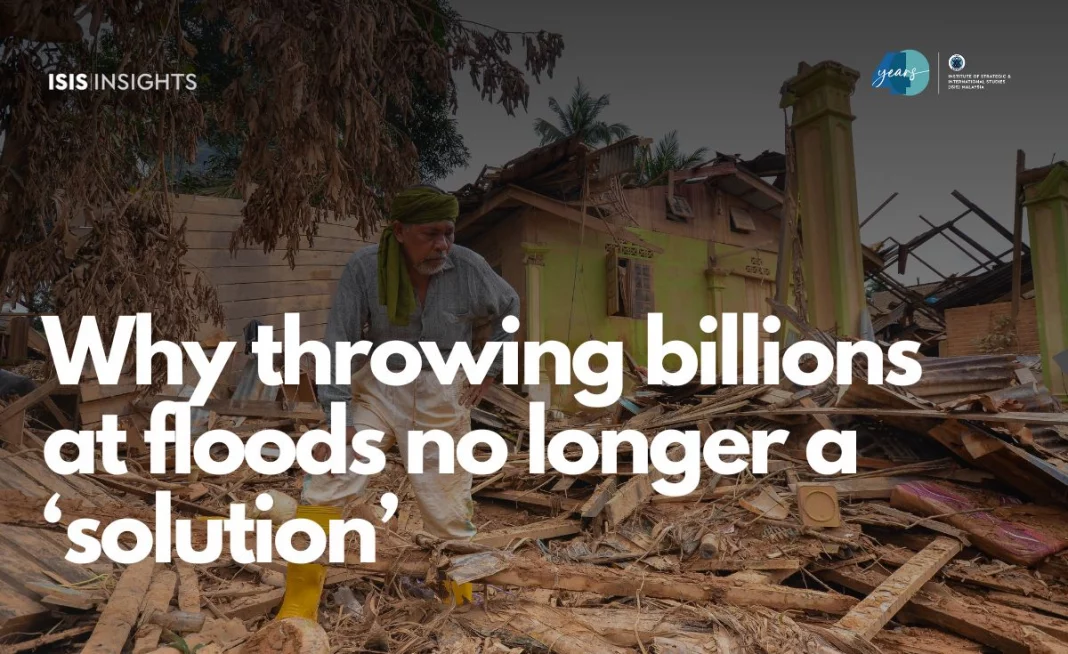National flood insurance scheme could alleviate financial toll, time to adopt climate–adaptation strategy
THE recent Intergovernmental Panel on Climate Change (IPCC) sixth assessment provides a sobering read – if we continue the present trajectory, parts of the planet will soon become uninhabitable.
The United Nations-backed report draws on the findings of hundreds of scientists to provide a comprehensive overview of how the climate crisis is unfolding.
It addresses the historic global warming of 1.5° Celsius and how man-made greenhouse gases cause unprecedented harm to communities and ecosystems.
What is of great concern to countries like Malaysia is the correlation between rising temperatures and an increase in extreme occurrences like flooding. According to the IPCC, global flood damage could be up to four times higher if global warming continues at its current pace.
This is because rapid climate change affects a country’s hydrological cycle, which results in the occurrence of extreme weather, rising mean sea level and unpredictable rainfalls. Experts now believe that Malaysia is dealing with precipitation abnormalities brought on by climate change from the past three decades.
The recent devastating floods in Johor are examples of an extreme weather event. Regional rainfall trends are greatly influenced by global climate change. As a result, the risk and frequency of floods because of heavy rainfall will continue to worsen.
Johor, for example, recorded its highest ever rainfall in four days since 1991. From 28 February to 3 March, the Air Panas station in Segamat recorded 731mm of rainfall compared with the highest monthly records in December 1991 (621mm) and December 2006 (599mm).
Our approach towards climate-related disasters also leaves much to be desired. We tend to react –for example, spending billions on providing shelter and essentials – but leaving victims to fend for themselves with one-off financial aids once flood centres are shuttered.
What we need are long-term schemes centred on climate-change adaptation. It’s time to make bold changes to our policies, systems, behaviours and way of life to safeguard Malaysians.
Since 2015, there have been talks of forming a Malaysian National Adaptation Plan (MyNAP). Unfortunately, it has never materialised despite Malaysia being a signatory of the Paris Agreement on Climate Change. Even in the recent Dewan Rakyat sitting, the rhetoric has and still very much remains reactive.
The recent floods are a clear sign that Putrajaya now must at least consider a national flood-insurance scheme to place climate adaptation at the centre of local climate action. Otherwise, communities will continue to remain vulnerable and such schemes are needed to help them cope financially with future disaster events.
Long advocated by former Klang MP, Charles Santiago, there exist best global practices from which we can draw on as examples.
The United Kingdom’s Flood Re Programme is a government-private sector initiative aimed at increasing the availability, accessibility and affordability of flood insurance. More importantly, the scheme is answerable to the UK Parliament.
Thailand and the Philippines have also adopted public insurance schemes where premiums are based on the likelihood of flooding in a specific area.
Such initiatives make insurance more affordable and accessible to the population, which is sorely lacking seeing that a staggering 74% of Malaysian homeowners do not have coverage against flood damage, according to a recent survey carried out by Zurich Malaysia.
The General Insurance Association of Malaysia (PIAM) is already on board, urging the government to consider utilising a portion of the money allocated for flood relief to cover the cost of B40 families’ flood insurance. It stressed that this is a not-for-profit initiative, which means that the premium will be modest and insurers will cover the administrative cost to run it.
Another step towards climate adaptation is to leverage on a number of local studies of projected rainfall patterns, carried out by the National Water Research Institute of Malaysia and Department of Drainage.
These studies will help to inform the design of future flood-control measures and by making the data publicly available, educate stakeholders, including insurance companies.
It is crucial for Malaysia to prioritise minimising loss and damage because we have many vulnerable groups, low-income communities, urban informal settlements and outdoor workers.
There is no other option but to take swift and fair action through mitigation and adaptation, considering the long-term loss and harm in terms of lives, livelihoods, and biodiversity. Climate change is here to stay and Malaysia has to do more by prioritising long-term adaptation to protect the rakyat.





